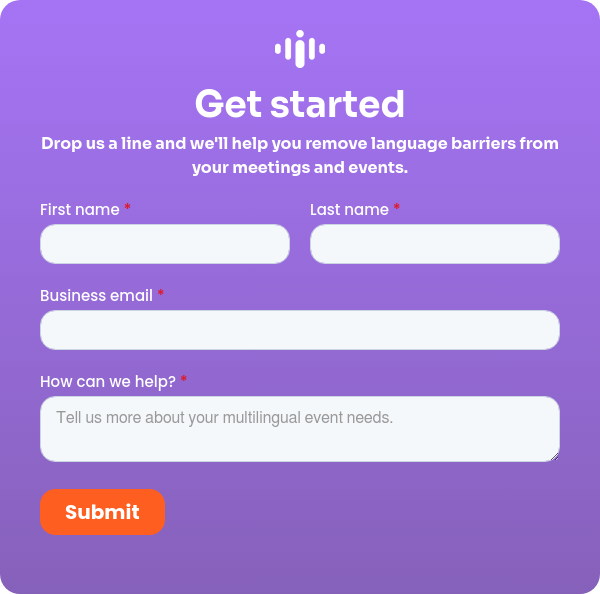Did you know that women involved in rear-end car crashes are three times more likely to suffer whiplash injuries compared to men? There’s a reason for this. According to a BBC report, the crash test dummies used to simulate car accidents are nearly all built to reflect the average male build and weight. This means that, in most cases, car safety is optimised for men to the neglect of 50% of the population.
Unequal car safety is one example among many that reveal the importance of accessibility: a practice of making information, activities, products, and environments usable for as many people as possible.
For event organisers, accessibility is critical to ensure that as many people as possible can attend and that all attendees can fully participate and engage with events. But organising an accessible event can be challenging, especially when faced with resource constraints. In this article, we share tips to help you improve accessibility without breaking the budget. But to make the best of these tips, we must first explore what accessibility means for events.
A rising tide lifts all boats: why event accessibility matters
Your audience benefits from accessibility features, including participants who identify as non-disabled. Captions and subtitles, for instance, have been proven by over 100 studies to increase understanding and memory retention for all viewers — according to a paper published in the PIBBS academic journal.
Along with benefiting all participants, accessibility features enable your event to reach a wider audience. In the EU, for instance, one-in-four adults live with some form of disability. Catering to their needs is key to opening your event to such a huge section of your audience.
This raises the question, how do you make your event more accessible? The broad answer: design your event to be open to everyone. For specific solutions, consider the needs of those with:
- Cognitive conditions — comprehending information can be difficult for some people especially if event areas are noisy or crowded. You can create a more welcoming environment by providing designated quiet areas and ensuring event content and design follows accessibility best practices (like using simple language and providing visual cues to reinforce information).
- Hearing impairments — audio captioning and sign language interpreters help attendees to access events when they would otherwise struggle to hear the speakers.
- Visual impairments — guests with visual impairments may rely on audio descriptions. Many benefit from clear and simple visuals and large print.
- Mobility impairments — attendees with restricted movement may need lifts, ramps, and convenient parking spaces to safely and comfortably navigate event spaces. Hybrid events offer audiences the ability to join virtually, which many attendees may prefer regardless of their condition.
5 Tips for making your event more accessible
1. Plan ahead and set priorities
The earlier you plan, the more opportunity you have to add accessibility to your events. Start by creating a checklist of accessibility needs and prioritise them based on their impact. Identify essential accessibility features that are critical for your attendee’s needs and the event's success. By focusing on these priorities, you can allocate your limited resources effectively and ensure that the most critical accessibility requirements are met.
2. Utilise volunteer support
Volunteers can play a significant role in making your event accessible while keeping costs down. Reach out to local disability organisations or community groups and seek their support in recruiting volunteers and providing advice. Often, university students can be recruited in exchange for an event ticket. These volunteers can assist with tasks such as guiding attendees, providing assistance with mobility, or facilitating communication. Ensure proper training and clear communication with your volunteers to ensure they understand the importance of accessibility and their specific responsibilities.
3. Make use of digital accessibility tools
Digital accessibility tools are invaluable in making your event inclusive. One such solution is to implement AI-generated live captioning, a cost-effective option that can easily be integrated into your event's setup. At Interprefy, for instance, we offer a next-generation AI solution that delivers accurate and real-time captions and translated captions in multiple languages. Our solution ensures that attendees can follow along and participate effectively.
4. Partner with sponsors and local businesses
Collaboration with sponsors and local businesses can be a win–win situation when it comes to event accessibility. Approach potential sponsors and local businesses with a compelling case for supporting your accessibility efforts. Highlight the benefits of aligning their brand with inclusivity and offer various partnership opportunities. Sponsors and local businesses can contribute resources such as funding, equipment, or expertise, helping you enhance the accessibility of your event without straining your budget.
5. Promote inclusivity through communication
Clear and inclusive communication is vital to ensure that attendees are aware of the accessibility features and services available at your event. Provide detailed information about accessibility on your event website, registration forms, and promotional materials. Utilise multiple communication channels, such as social media, email newsletters, and announcements during the event. By proactively communicating your commitment to accessibility, you create a welcoming environment for attendees.
Creating more inclusive, accessible events for all
Creating an accessible event doesn't have to be a daunting task when you have budget limitations. By following these five tips, you can make significant strides in enhancing the accessibility of your event without compromising your financial resources. Increasing event accessibility creates better experiences for the maximum number of attendees and widens your event’s reach.
Next steps: learn more about the benefits of AI captions to discover if they’re the right accessibility solution for your event. Don’t miss the story of AVIXA and how they used it at an event.






.webp?width=468&quality=high)




 More download links
More download links



